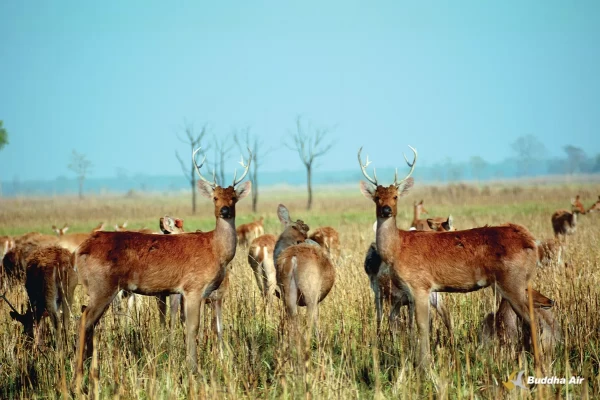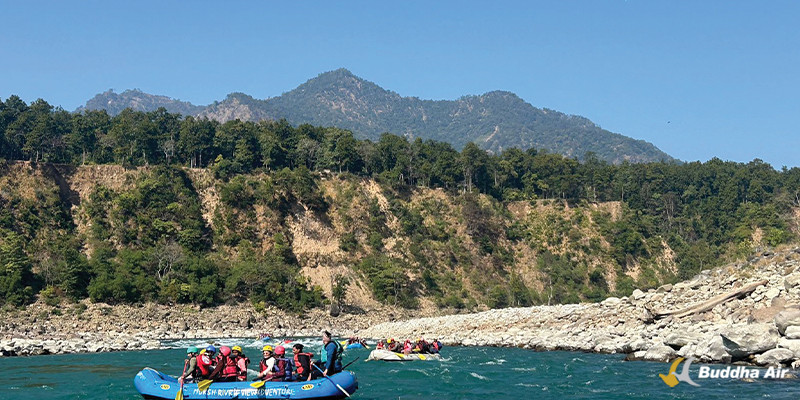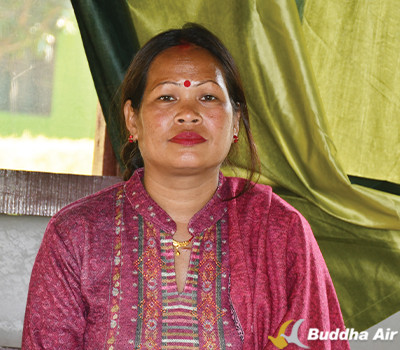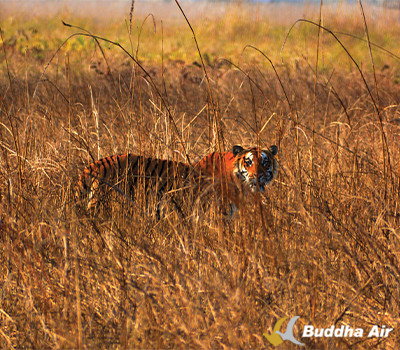Shuklaphanta- A Sanctuary of Silence Survival and Spectacle

Shuklaphanta National Park, a hidden treasure of Sudurpaschim Province, is home to diverse wildlife, including swamp deer, tigers, rhinoceroses, elephants, birds, and various plant species. Despite its rich biodiversity, Shuklaphanta remains largely unknown to tourists due to the Nepal government's poor marketing efforts.
Shuklaphanta National Park, located in Kanchanpur, Sudurpaschim Province, is a unique wildlife destination. Covering 305 square kilometers, one-third of the park consists of grasslands, while the rest includes forests, lakes, and rivers.
Situated in the Terai region along the Indian border, the park provides an excellent opportunity for biodiversity research. The culture and lifestyles of the Tharu community residing in the buffer zone add to its appeal as a tourist attraction.
Shuklaphanta is renowned for its barhasingha, Royal Bengal tigers, rhinoceroses, wild elephants, and birds. According to the latest statistics, the park is home to 2,323 barasingha, 44 tigers, 23 rhinoceroses, 12 permanent wild elephants, and 465 bird species.
The park headquarters is located in Majhagaon, near Mahendranagar Bazaar. A significant attraction is the 55-square-kilometer grassland where large herds of barasingha can be observed. These barasingha, or the swamp deer, named for their distinctive 12-horned appearance, are found in impressive numbers within the park.
The best time to visit Shuklaphanta is from March to June when wildlife sightings are most frequent. Watching a barasingha raise its head at the sound of approaching visitors is a remarkable experience.

Rafting in Mahakali
Rafting is available on the Mahakali River, which forms the border between Nepal and India. For those preferring a longer experience, a three-hour rafting trip from Parshuramdham in Dadeldhura to Brahmadev is available. A one-hour rafting route runs from Khalla Musatthi village (Ward No. 9, Bhimdatta Municipality, Kanchanpur) to Brahmadev. Interested adventurers can contact travel companies or hoteliers in Mahendranagar to make arrangements.
Deer are commonly seen roaming the grasslands, while tigers and rhinoceroses can often be spotted resting near ponds. During summer, animals venture into the forests for food in the early morning and evening while spending the hotter parts of the day near water sources or under large trees.
The park has 120 ponds, both natural and man-made, providing an ideal habitat for migratory birds. This year, 18,000 birds were counted in Panchi Tal (also known as Shikari Tal).
Another major attraction is the blackbuck population, which has been protected in the Hirapurphanta since September 2012. The blackbuck count has now reached 309.
Visitors must enter the park before 3 PM and exit before sunset. Activities such as jeep safaris, jungle walks, and birdwatching require the guidance of trained nature guides. Currently, 20 nature guides operate within Shuklaphanta.

Shuklaphanta has immense tourism potential. We are actively working on branding it as a prime destination. We organize the Shuklaphanta Tourism Festival annually to attract domestic and foreign tourists.
Padam Bogati
Mayor, Bhimdatta Municipality, Kanchanpur

The park's buffer zone offers a chance to study biodiversity and the Tharu lifestyle. The park administration and the government should take the initiative to develop every village into a 'tourist village.' Conservation efforts should be complemented with a strong emphasis on eco-tourism.
Meena Chaudhary
Chairwoman, Shobhatal Buffer Zone Consumer Committee

ur focus initially was on protecting wildlife and their habitats. Since the reserve was converted into a national park, we have prioritized tourism development. We are working on expanding tourism infrastructure within the park and its buffer zone.
Purushottam Wagle
Information Officer, Shuklaphanta National Park
With proper tourism infrastructure and effective marketing, Shuklaphanta has the potential to thrive as a major wildlife tourism destination.
The park has only prioritized conservation over tourism promotion. Additionally, tourism entrepreneurs in Kathmandu focus on selling travel packages to more accessible destinations, neglecting the Far West region.
Foreign tourist arrivals are also limited due to the long road journey and high cost of travel.
A targeted campaign should be launched to attract Indian visitors to boost tourism in Shuklaphanta. Western foreigners in India can also be attracted to Mahendranagar directly from Delhi, which is only 325 kilometers away and can be reached in six hours by private vehicle. Nearby Indian destinations such as Haridwar, Dehradun, and Nainital also present potential tourist markets.
However, tourists entering Nepal through the Gaddachauki border in Mahendranagar face excessive security checks at multiple locations, which can be inconvenien.
"Until a unified system is implemented, tourists will continue to face unnecessary hassle," says tourism entrepreneur Pramanand Bhandari. "Despite repeated appeals to authorities, no action has been taken."
Further, a dilapidated bridge on the Indian side has restricted four-wheeled vehicle movement from 8 PM to 6 AM, adding to transportation challenges.
Shuklaphanta can be promoted as a prime destination to witness the world's largest herd of swamp deer and the Royal Bengal Tigers. Park officials, tourism entrepreneurs, and all levels of government should recognize its potential as a tourism goldmine and invest in its promotion.

Historically, King Mahendra designated Shuklaphanta as a hunting reserve in 1969. It was later declared a wildlife reserve in 1973 and officially converted into a National Park in 2017.
For tourists visiting Shuklaphanta National Park, Mahendranagar Bazaar offers hotels, lodges, and restaurants with tourist-friendly facilities. Additionally, shuklaphanta Jungle cottage, tented camp, and community homestays near the park entrance provide diverse lodging options.
The surrounding area of Mahendranagar is rich in natural, religious, cultural, and historical sites. A well-planned week-long itinerary would allow tourists to explore the region thoroughly. It is time to work together for integrated tourism development, with Shuklaphanta at its core!
How to Reach?
Kathmandu to Mahendranagar is a 750-kilometer journey, taking approximately 16 hours by bus. Alternatively, travelers can take a one-hour flight from Kathmandu to Dhangadhi. From Dhangadhi Airport, Mahendranagar is 55 kilometers away, requiring about 1 hour by bus. The final leg from Mahendranagar to Shuklaphanta is a 5-kilometer drive, taking around 15 minutes by car.
Cover Photo : Khem Bhandari
 Shuklaphanta’s Advocate
Shuklaphanta’s Advocate
Tourism expert Pramanand Bhandari has been actively promoting Shuklaphanta for over thirty years. Known as the park's unofficial spokesperson, he has dedicated himself to its tourism development.
He operates 'Hotel New Anand' in Mahendranagar Bazaar and 'Shuklaphanta Jungle Cottage' near the park's entrance in Majhagaon to provide tourists with comfortable accommodations and quality food.
He also offers tour packages through his travel agency, Mohit Travels, which caters to Nepalese and Indian destinations.
Initially established by his father, Narishwar, in 1995, Bhandari transformed the family hotel into a tourist facility. In 2013, he launched the Jungle Cottage. His businesses currently employ 50 people.
Despite his dedication, challenges remain. Business-friendly policies and regulations are lacking, and tourist traffic in Shuklaphanta is minimal. As a result, he has yet to see a return on his investment. However, his perseverance and commitment continue to drive his work forward.
"If a star hotel were established near Shuklaphanta, it would attract high-end tourists," says 50-year-old Bhandari. "This region needs significant investment to unlock its full potential."
